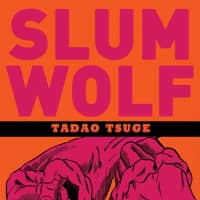Tadao Tsuge's "Slum Wolf" is a collection of nine of the artist's short stories compiled and translated into English for the first time. Tsuge — described as "one of alternative manga's cult stars" — published much of his oeuvre in Garo, a monthly manga magazine that ran from 1964-2002.
Slum Wolf, by Tadao Tsuge, Translated by Ryan Holmberg.
336 pages
NEW YORK REVIEW COMICS, Manga.
Broadly speaking, Tsuge's stories deal with kimin, or "abandoned people." Kimin is a cutting, yet comprehensive, term and includes those of the burakumin caste lineage, the homeless and stateless and, most recently, refugees from the Fukushima Daiichi nuclear disaster. But in Tsuge's world, they are those — albeit mostly men — who have been left behind in Japan's recovery from World War II, "neglected ... to the point of dispossession." Together they live in the nebulous "Vagabond Plain," a shantytown that simultaneously exists both nowhere and everywhere.
Tsuge's artwork is unpolished, but his panels are full of dynamic, bold lines that pulse with energy. Light and shadow are used with stage-like effect, concealing both faces and backgrounds.
Before delving into the manga, read the two essays at the back of the book. The first is a translation of one of Tsuge's own writings, while the second is a comprehensive overview by editor and translator Ryan Holmberg about Tsuge, Garo and postwar Japan. They provide valuable historical and socio-economic context for understanding Tsuge's recurring motifs.
At times a challenging, discomfiting read, "Slum Wolf" is a gritty addition to Japan's pop culture canon.

















With your current subscription plan you can comment on stories. However, before writing your first comment, please create a display name in the Profile section of your subscriber account page.